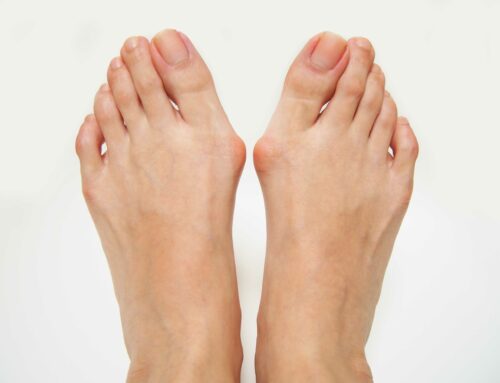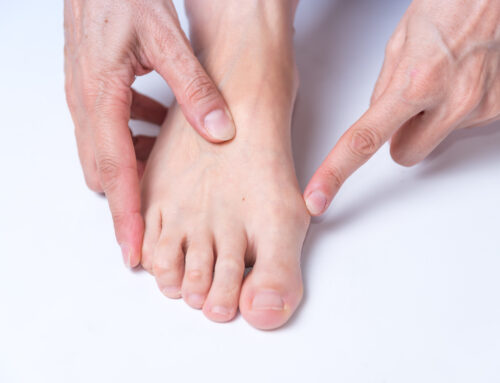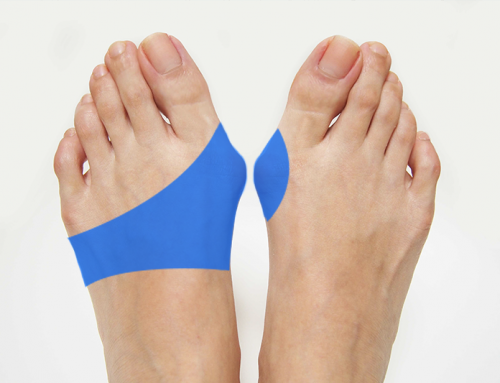At one point, bunion surgery required a major commitment from a patient. Traditional bunion surgery was painful, left unsightly scars, and forced people off their feet for weeks or months at a time. Indeed, traditional bunion surgery recovery can last anywhere from 2-6 months –– depending on the severity of the bunion and the nature of the procedure. On the other hand, minimally invasive bunion surgery recovery time is considerably shorter. Most patients who undergo minimally invasive bunion surgery are back to full strength in just a few short weeks.
How is this possible? How is minimally invasive surgery so much better than the alternative? We’ll explain further below:
Treating Bunions
Understandably, many people still view bunion surgery as a painful and time-consuming method for dealing with bunion pain. As a result, many individuals who are struggling with bunions may look toward over-the-counter treatment options –– things like bunion sleeves, pads, and splints –– for relief.
The bad news is that while some of these products may provide temporary pain relief, they don’t actually treat bunions. In fact, bunions only tend to get worse over time. Left untreated, bunions may grow larger and become even more painful.
Note that if you’re currently dealing with bunions, the sooner you get treated, the better. Regardless of the surgical method, recovery is almost always easier if the bunion is removed early in development.
Traditional Bunion Surgery
There are actually dozens of variations on “traditional” bunion surgery. Generally speaking, though, traditional bunion surgery can be thought of as a bunionectomy –– a procedure to remove a bunion.
During traditional bunion surgery, the surgeon will make a large incision across the top or the side of the foot in order to remove the bunion. Then, depending on the severity of the issue, they may insert metal screws or pins in order to realign the foot and hold its new position in place.
While the surgery is effective at getting rid of bunions, it comes with a cost. The procedure can be very painful, it may force patients to spend several days in the hospital afterward, and most people will be instructed to stay off their feet completely for the following two weeks. And then, it may take another six months before the patient can return to “normal” daily activities. Many who undergo traditional bunion surgery will have to wear a cast or use crutches for an extended period of time.
Minimally Invasive Bunion Surgery
Minimally invasive bunion surgery is, as its name suggests, minimally invasive. In theory, the procedure is designed to do the same thing as traditional bunion surgery –– remove the bunion. In execution, though, minimally invasive bunion surgery differs greatly.
For one, minimally invasive bunion surgery is an outpatient procedure. We only use local anesthesia during the surgery, which means that the patient remains conscious throughout the entire process.
During the surgery itself, the surgeon will make several very small incisions in the foot to extract the bunion and realign the joints and ligaments if need be. As opposed to traditional bunion surgery, this method is much less painful and leaves significantly less scar tissue.
After the procedure, which usually lasts around 90 minutes total, most patients are able to walk out of the operating room under their own power and drive home.
From there, recovery typically occurs quickly. Many individuals are able to return to work almost immediately. Some patients will still have to wear a postoperative shoe for between 1-5 weeks after the surgery.
Contact Us
The facts are clear: minimally invasive bunion surgery is a much better solution to bunion pain than any other option. At Northwest Surgery Center, we’re pioneers of this exciting treatment, and we have the knowledge and the resources to ensure positive outcomes for our patients. We can help you deal with bunion pain –– so contact us today to learn more!

Reviewed By Dr. Sullivan
Dr. Jordan Sullivan, DPM, is a board-certified podiatrist at Northwest Surgery Center specializing in minimally invasive foot and ankle procedures. He’s passionate about helping patients get back on their feet faster with less downtime.
Learn more about Dr. Sullivan here.





